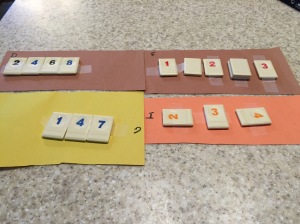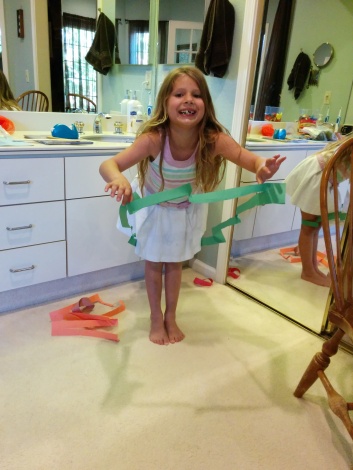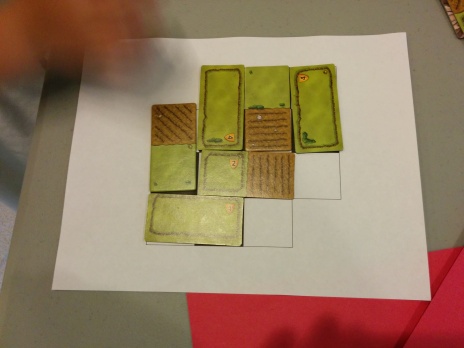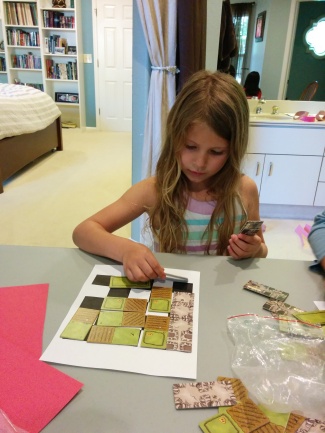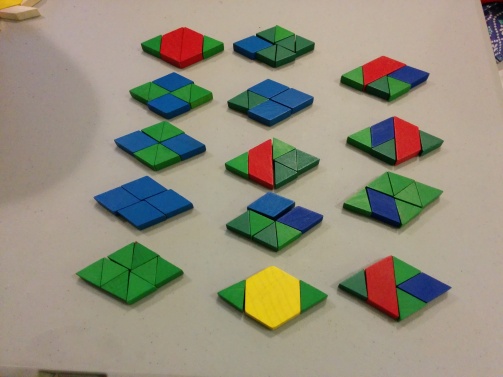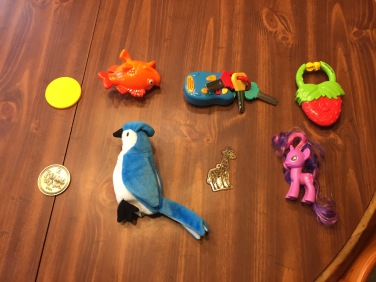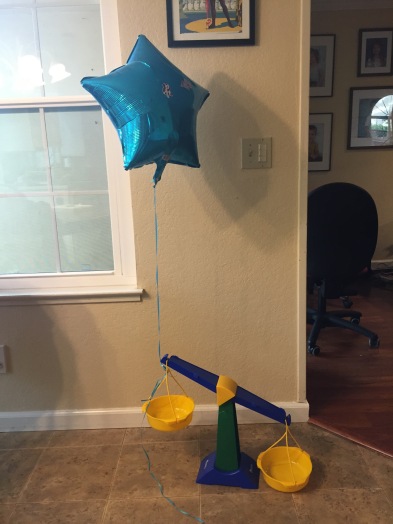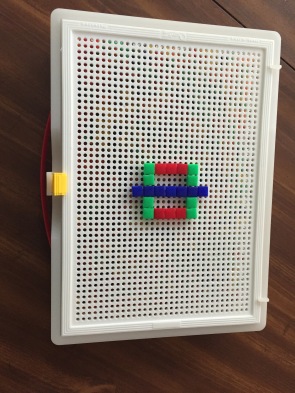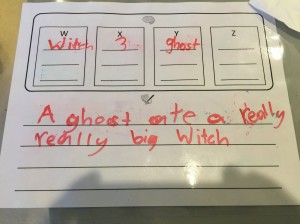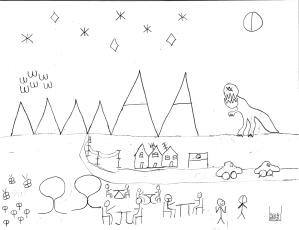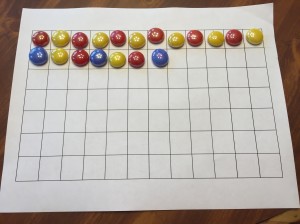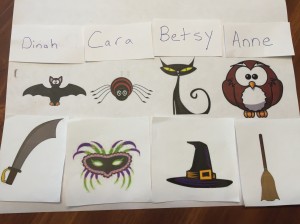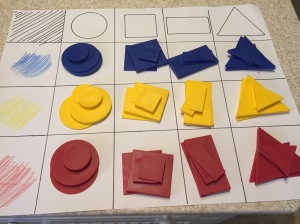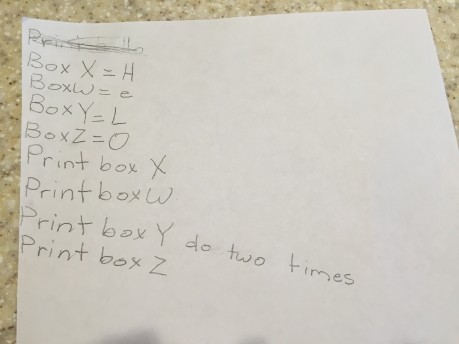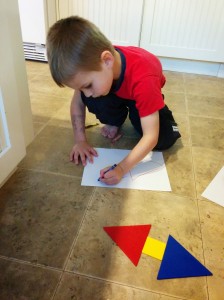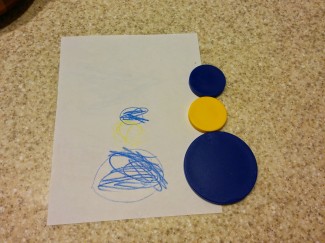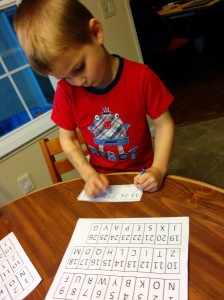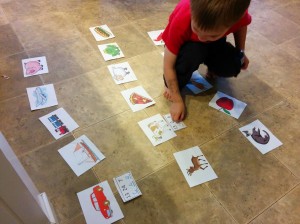The Activities
- Topic: Subtraction: Book: Subtracting With Sebastian Pig and Friends on a Camping Trip by J. Anderson.
- Topic: Addition: I put a bunch of slips of paper with numbers 1-9 inside of plastic Easter eggs. Each kid drew out 2 eggs, opened them, and added them using Base Ten Blocks. After a bit, they switched to drawing 3 eggs instead.
- Topic: Patterns: We made a number of patterns using Rummikub tiles, which have numbers 1-13 in one of 4 different colors. Taking turns, the kids completed the patterns in increasing order of difficulty.
- 9,10,11, all blue
- 2,3,4,5 alternating black and red
- 1, 1 tile face down, 2, 2 tiles face down (in a stack), 3, 3 tiles face down
- 1,3,5,7, all yellow
- 2,4,6, all red
- face down stacks with 1 tile, 2 tiles, 3 tiles
- 1,4,7, all blue
- face down stacks with 1 tile, 2 tiles, 1 tile, 2 tiles
- 2,3,4, all yellow, rotating clockwise
- 1,1,2,3,5, all yellow
- Topic: Numbers: Zero is the Leaves on the Tree by B. Franco.
- Topic: Numbers: We discussed some interesting zero facts. What’s 2+0, 3+0, 1 million + 0, …; what’s 2 – 0, 3 – 0, …; and even multiplying by 0.
- Topic: Combinations, Combinatorics: I told the kids that baby language had only two letters, A and B. The task was to find all the 4 letter words in baby language. The kids took turns adding new words to a list taped to the wall.
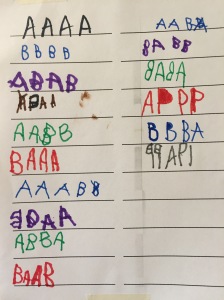
How Did It Go?
All 5 kids attended.
Subtracting with Sebastian Pig and Friends on a Camping Trip
The kids liked finding the mice who had stolen all the pig’s things. They’re still not that great at problems like 11 – 7.
Easter Egg Addition
This went quite well, all the kids were into it. Most of the kids needed Base 10 Blocks to do the addition. A couple of them needed help figuring out how to use them, but got the idea after a while. Our son has practiced addition a lot, so I gave him multiplication problems instead.
Rummikub Patterns
We took turns with which kid got to touch the tiles to make the solution, but all the kids worked together to figure out the answer. As we’ve seen in the past, counting by 2’s and 3’s is fairly easy for some kids and difficult for others. The two trickiest ones were 1, stack of 1, 2, stack of 2, …, because they wanted to just do the stacks, and not include the numbers; and, not surprisingly, Fibonacci, they didn’t figure that one out.
Zero is the Leaves on the Tree
For each picture, I asked the kids why there were 0 of whatever it was (e.g., why were there 0 leaves on the tree during fall?)
Zero Facts
They picked up on the addition and subtraction pretty quickly, although I did need to show it on my fingers at first. For multiplication, they wanted to say 0 * 5 = 5, not too surprisingly since that was the pattern from addition and subtraction. It took them several explicit run throughs of “What’s 0 + 0 + 0 + 0 + 0?” before they got the pattern.
Baby Language
They did quite well on this, they got about 12 before I started helping them. I wanted to make sure everyone got the same number of turns writing on the sheet, so I helped on the last few. We were running short on time, so I didn’t ask them whether that was all of them and how could they tell.
